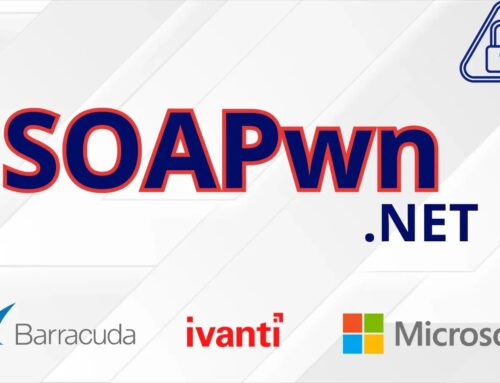
Linux Kernel netfilter Vulnerability Let Attackers Escalate Privileges
In the complex landscape of Linux kernel security, a new concern has emerged that demands immediate attention from system administrators and cybersecurity professionals. A critical vulnerability has been identified within the Linux kernel’s netfilter subsystem, specifically impacting its ipset framework. This flaw doesn’t just represent a theoretical risk; it provides a direct pathway for local attackers to escalate privileges to root-level access, turning a standard user into a potential system compromiser.
Understanding the netfilter ipset Vulnerability
The vulnerability, tracked as CVE-2023-32233, resides within the netfilter ipset subsystem’s bitmap:ip implementation. Netfilter is the packet filtering framework within the Linux kernel, responsible for network address translation (NAT), packet filtering, and other packet manipulation. Ipset, on the other hand, is a companion application that allows administrators to set up and manage IP sets, which are data structures storing IP addresses, networks, and port numbers, used for efficient matching in netfilter rules.
The core of this critical flaw lies in an insufficient range validation when processing CIDR notation within IP address ranges. Specifically, the bitmap:ip mechanism, designed for efficient storage and lookup of IP addresses, fails to perform adequate bounds checks. This missing validation allows a local attacker to provide carefully crafted input that can lead to an out-of-bounds write. Such a write can corrupt kernel memory, ultimately enabling the attacker to execute arbitrary code with elevated privileges, effectively gaining root access.
Technical Deep Dive: The Impact of Insufficient Validation
The vulnerability arises from how the bitmap:ip implementation handles the conversion of CIDR blocks into internal representation. When a CIDR (Classless Inter-Domain Routing) block like 192.168.1.0/24 is processed, the system expects the input to fall within certain boundaries. Without proper validation, an attacker can supply a CIDR range that exceeds these boundaries, causing the system to write data beyond the allocated memory, leading to a heap overflow or similar memory corruption.
This memory corruption can then be exploited to achieve privilege escalation. By carefully manipulating the overflow, an attacker can overwrite critical kernel data structures, gain control over execution flow, or inject malicious code into the kernel. Once arbitrary code execution is achieved in kernel space, the attacker has complete control over the system, bypassing all user-mode security mechanisms.
Who is at Risk?
Any Linux system utilizing the netfilter ipset subsystem is potentially vulnerable. This includes a vast array of systems, from personal Linux workstations and servers to cloud instances and embedded devices. While the vulnerability requires local attacker access, this is a common scenario in multi-user environments, compromised web servers, or containerized setups where an attacker might first gain low-level access.
The severity of this flaw cannot be overstated. A successful exploit grants root privileges, allowing an attacker to:
- Install backdoors or rootkits.
- Modify system configurations.
- Access sensitive data.
- Execute arbitrary commands with full system control.
- Further pivot and compromise other systems on the network.
Remediation Actions
Addressing CVE-2023-32233 is paramount for maintaining the security posture of your Linux systems. Here are the immediate and recommended remediation steps:
- Apply Kernel Updates: The most crucial step is to apply the latest kernel updates provided by your Linux distribution. Vendors like Red Hat, Debian, Ubuntu, and others have released patches addressing this vulnerability. Immediately update your systems.
- Monitor Kernel Patches: Maintain a vigilant watch for announcements from your Linux distribution vendors regarding security advisories and new kernel versions.
- Limit Local Access: Where possible, restrict local user access to systems. Implement the principle of least privilege, ensuring users only have access necessary for their tasks.
- Implement Intrusion Detection Systems (IDS): Deploy and configure IDS/IPS solutions to monitor for anomalous kernel behavior or attempts at privilege escalation. While not a direct patch, it can help detect post-exploitation activities.
- Regular Security Audits: Conduct regular security audits of your Linux systems to identify and mitigate other potential vulnerabilities.
- Kernel Hardening: Explore and implement kernel hardening techniques where appropriate, such as restricting kernel module loading, enabling KASLR (Kernel Address Space Layout Randomization), and others, although these are not direct mitigations for this specific flaw, they improve overall system resilience.
Security Tools for Detection and Mitigation
While direct patching is the primary mitigation, several tools can assist in detecting vulnerabilities, monitoring system health, and enhancing overall security:
| Tool Name | Purpose | Link |
|---|---|---|
| Vuls | Vulnerability scanner for Linux, supports detection of CVEs. | https://vuls.io/ |
| Lynis | Security auditing tool for Linux, provides hardening recommendations. | https://cisofy.com/lynis/ |
| OpenVAS / Greenbone Vulnerability Management | Comprehensive vulnerability scanning and management solution. | https://www.greenbone.net/ |
| Trivy | Container and filesystem vulnerability scanner. | https://aquasec.com/products/trivy/ |
| OSSEC / Wazuh | Host-based Intrusion Detection System (HIDS) for monitoring system integrity and logs. | https://www.wazuh.com/ |
Conclusion
The discovery of CVE-2023-32233 in the Linux kernel’s netfilter ipset subsystem underscores the continuous need for vigilance and proactive security measures. This privilege escalation vulnerability, stemming from a fundamental flaw in input validation, highlights how critical seemingly minor programming errors can be when exploited. System administrators and IT security teams must prioritize immediate patching and reinforce their overall security posture to mitigate the risks posed by this and similar kernel-level vulnerabilities. Staying informed, promptly applying updates, and employing robust security practices are the best defenses in the ongoing battle against sophisticated cyber threats.





